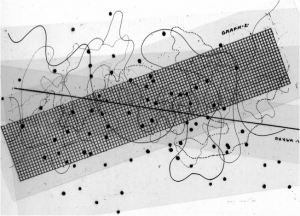
The digital art and design studio, onformative, was commissioned by IBM to create a permanent installation for the new IBM Watson IoT Headquarters in Munich last year. The result was a data-driven art installation visualizing the different facets of the Internet of Things and cognitive technologies called “ibm flux”.
video of ibm flux
From ribbons of light to responsive gradients, the visual content is data-driven and interactive based on real-time time input of various sensor inputs and weather forecasting and culminates in an upward motion with a pulse and positive momentum. The shape was inspired by the IBM Watson and realized by using thirty-two curved screens span over eight ribbon displays.

“flux” activates the space and demonstrates the significance of cognitive technologies and A.I. in our present world and future – reflecting the ideation, innovation, growth and creative power of technology.

![[OLD FALL 2018] 15-104 • Introduction to Computing for Creative Practice](https://courses.ideate.cmu.edu/15-104/f2018/wp-content/uploads/2020/08/stop-banner.png)



